In February of 2002 a group of 22 students assembled for the second ever kettlebell certification with Pavel. From water balloons, mattresses, and a very different teaching progression, it was life-changing to say the least. Out of the first group came many of the original senior instructors and the organic development of the School of Strength as we know it.
After 20 years of being a part of that group, here is what I have learned and observed.
1. It’s a Fad
I heard this a LOT early on and there is something to be said about being a part of the “counterculture” at times. As an early adopter of kettlebell training, it felt good to be going against the trends of the day. Now, fast forward 20 years and kettlebells are mainstream tools found in almost every gym and even in some hotel fitness centers.
What was once a fad has become established. My first kettlebell is now 20+ years old, I have been certified for 20 years, and teaching with Pavel for 19 years. I cannot imagine my life or career without it.
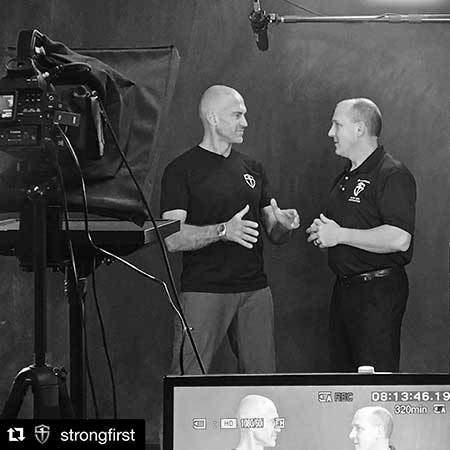
2. Health and Fitness Cannot be Separated
“The only place fitness comes before health is in the dictionary.”—Me (I think.)
Yes, that is a repeat from my article, “15 Years and 15 Observations,” but it bears repeating. The pandemic has highlighted and challenged many aspects of society, but the lockdowns revealed what society considers essential. Gyms, studios, etc. are not on the list.
Why not?
Society equates fitness with aesthetics. It does not equate fitness with health.
Fitness, separated from health, is not considered essential. But as George Hackenschmidt noted many years ago: “Health can never be divorced from strength.” Health and fitness are a package deal and one that can make a real difference in people’s lives. However, until we stop equating fitness with aesthetics alone, the benefits of health and fitness will not be realized.
3. I am a Student of Strength
Refining and developing new teaching strategies, as well as my own form and technique never ends. As a student of strength, I continue to learn how to be better at this even after 20+ years.
What if we approached training as an opportunity to learn instead of a way to work out?
Be a student.
4. There will be Challenges
“Be kind, for everyone you meet is fighting a hard battle” is a classic quote that has been adjusted into a popular meme. After cancer, I seek to live with this mindset every day.
We will all face challenges. In 2020, I faced my greatest challenge in a battle with throat cancer.
During my cancer treatment, I lost over 40 pounds and had to truly rebuild from zero. This afforded me the opportunity to relearn so much about training and my body.
“Circumstances don’t make the man; they only reveal him to himself.”—Epictetus
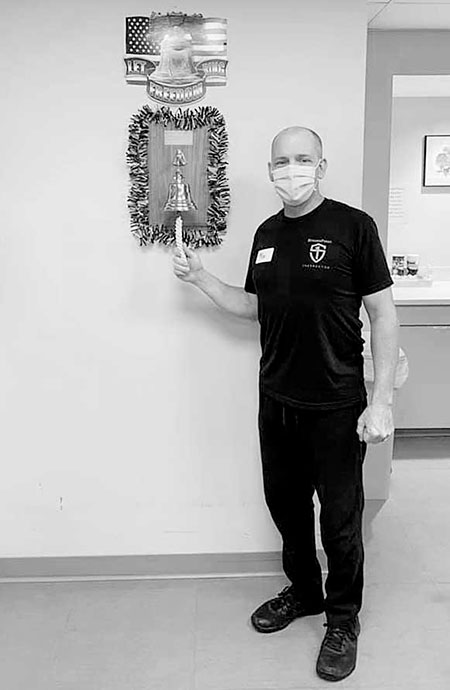
5. Breathing is Important
Information on breathing seems to have hit a “fever pitch” with books like Breath by James Nestor (2020) and Oxygen Advantage by Patrick McKeown (2015). The original 2002 certification with Pavel taught breathing for performance well before these books, but it took a couple more years before the health and movement benefits of breathing were emphasized. The StrongFirst online course SECOND WIND express is an excellent resource that takes a deep dive into breathing.
Breathing is important (nailed it, Captain Obvious) and if an athlete’s breathing is not “normal” then training it should be a priority.
How do we know if breathing is normal? You can use a Hench test or take the deep dive with the FMS Screening and Assessing Breathing: A Multidimensional Approach. Once you establish a baseline, you can direct your work to improve breathing.
6. Use Anti-Glycolytic Training/Energy Systems
Circling back to the concept of health’s relationship to fitness—anti-glycolytic training is a health-based approach to develop conditioning. Anti-glycolytic training tries to achieve the goal (conditioning) at the lowest energy system cost, rather than putting the body under stress.
Coming out of my bachelor’s program, I could certainly have nailed down the broad strokes of the Krebs Cycle and energy systems. But thanks to Pavel’s work and professors like Brent Walsh, I now have a better understanding of how energy systems work and how to utilize them.
Pavel’s work on this in Strong EnduranceTM, All Terrain ConditioningTM, and the book The Quick and the Dead should be studied and implemented by everyone.
7. Be Intuitive
“A good artist lets his intuition lead him wherever it wants.”—Lao Tzu.
Physical training is an art and a science. When you allow intuition to guide your training, you become an artist.
In my training after cancer treatment, intuition was critical to my success. Knowing how to read what I needed each moment allowed me to surf the waves of recovery. But beware, do not rely on intuition alone. One of the traps of intuitive training is losing the structure of a set path or goal. Therefore, the need to track and review your training is equally as important. To paraphrase Yogi Berra, “If you don’t know where you’re going any road will get you there.” You don’t want intuitive processes to lead you down that road.
You must be an artist and a scientist.
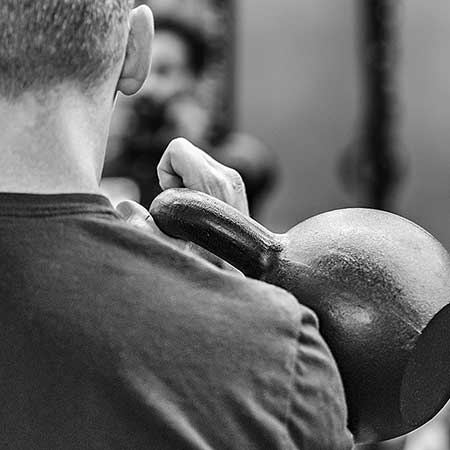
8. Be Structured
There is a deep science behind physical training and following the science can help develop a very structured approach.
Plan StrongTM, Built Strong, and Strong EnduranceTM are all powerful examples of the structured and scientific basis of StrongFirst programming. Following a plan is a proven method for success.
However, there is also a trap in structured programming. There is the danger of losing the intuitive side and pursuing a path that sets you over the cliff. If you hold so tightly to the program that you cannot acknowledge the need to adjust the plan for a day (or longer), adapt to stress (inside and outside the program), or optimize recovery then you might fail on the program.
Remember, be an artist and a scientist.
9. Anatomy Matters
Anatomy matters—period. The study of anatomy sets a foundation for your understanding of structure and function in training.
As an athletic trainer with a Sports Medicine degree, I have a solid background in anatomy and still find myself relying on it to optimize coaching. If you do not have a background in anatomy, then something as simple as the Anatomy Coloring Book or other online resources can get you started.
A caveat—do not lose the individual in the general. It is important to recognize the significant individual variation in anatomy and adjust to it. In my article, “Adjust Your Sails,” you will see one such example of adjusting your stance based on individual variation in hip structure.
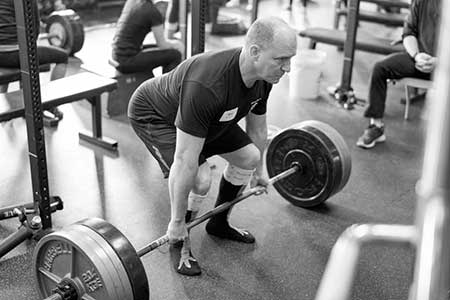
10. A Matter of Semantics
“All our work, our whole life is a matter of semantics, because words are tools with which we work to make laws. Everything depends on our understanding of words.”—Felix Frankfurter
Considering Frankfurter’s background as an associate justice of the Supreme Court, his quote makes sense. While it may appear to be a bit strongly worded for the study of physical training, it highlights the importance of using words with an agreed upon meaning.
This is a challenge in the training world. Exercise meanings, definitions, and names seem to shift as quickly as the social media landscape. As an example, I once posted about doing an exercise I refer to as a long push press and received a comment asking if I was referring to an exercise called thrusters. They are the same thing, but the semantics change depending on the group or individual. I learned the exercise about 20 years ago as a long push press and another group later renamed it thrusters. To me it is still a long push press, and this is where the confusion lies.
I am not sure how to get an industry as fluid as the training industry to agree upon a list of terms and semantics. However, it is important to realize that until you confirm exactly what an individual means you may be saying the exact same thing, differently.
11. Consistency Over Intensity
“Long term consistency trumps short term intensity.”—Bruce Lee (Anytime you can use a Bruce Lee quote, use a Bruce Lee quote.)
If more trainees embraced this mindset, they would have better and healthier results. Remember, health and fitness cannot be separated.
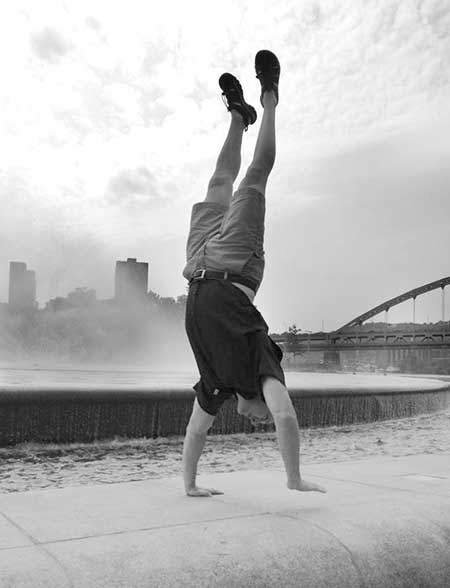
12. The Effects of Travel
With my cancer diagnosis and the pandemic in 2020, my travel schedule went from 25-30 trips a year to zero. For the first time in 17 years, I wasn’t on the road and it made quite a difference.
Not only was I able to be more consistent in my training, but my recovery and progress were better than they had been in the previous 17 years.
When I implemented the timeless strategy, gauging recovering between sets according to breath, I started to really understand the impact of travel on my training. My timeless times would change dramatically after a trip. If you travel for work, realize that after a trip consistency and taking time for reduced intensity and volume sessions is important.
13. Rediscovered Methods
De Arte Gymnasica by Girolamo Mercuriali is one of the (if not the earliest) books on physical training. In it you will see medicine ball training, rope climbing, and many other modern methods. It may be the case that the “new methods” being marketed are actually rediscovery.
And rediscovery is still great.
14. Be a Good Ancestor—Leave a Legacy
The book Legacy by James Kerr deserves to be on your bookshelf (after reading it, of course).
The book discusses the importance of being a good ancestor. We tend to think too much in the short term with a great deal of self-interest, but what if we cast our thoughts down the years to the impact our actions can (and will) have on others? Would we behave differently if we looked at how something will be received generations from now? We all stand on the shoulders of our ancestors. Are you being a good ancestor so others can stand on your shoulders in the future? I believe that if more people evaluated their actions in this light, we would be in a different place.
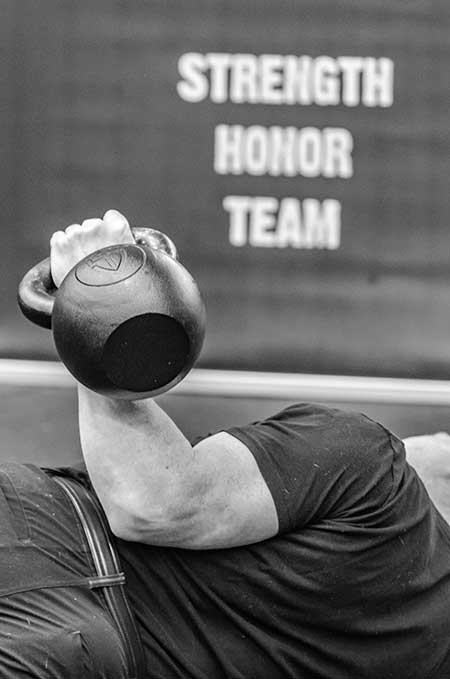
15. The Illusion of Communication
“The single biggest problem in communication is the illusion that it has taken place.”—George Bernard Shaw
Similar to the confusion around semantics, frustration and conflict arise from the assumption that communication has occurred. Just because you said it once from your perspective does not mean that communication took place. Do you remember the old saying about what assuming does?
Some communication skills to keep in mind are active listening by using a brief back (your companion repeats what they heard) or repeating back what was said to you. While we all might want to avoid being repetitive, do not be afraid to repeat yourself.
The Socratic method still holds true: tell them what you are going to tell them, then tell them, and then tell them what you told them.
16. Coaching and Cueing
What has excited me most in the last few years is the science and practice of coaching and cueing. How can I most effectively coach a student to learn a new exercise? How can I create a rich vibrant set of cueing that allows skill acquisition and learning to happen more efficiently?
Nick Winkelman has been leading the charge on this. His book The Language of Coaching is one you should have if you coach students.
It is important to note that while the science of cueing and creating effective language in coaching is of critical importance, the next step is to let learning and struggle happen.
Create situations where variables are constrained and the goal movement is encouraged, but then step back and allow (safe) struggle and learning to occur. Too often a student is talked to death and micromanaged. Struggle is okay, even critical.
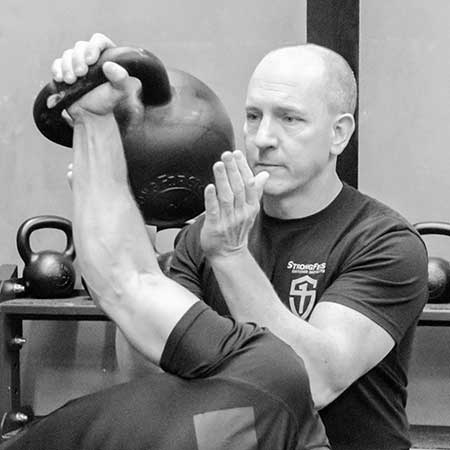
17. Online Coaching—An Effective Platform
I have been offering online coaching for several years—long before pandemic times. Precisely identifying what occurs in a student’s technique and creating verbal, visual, and kinesthetic cueing to improve and progress their skills is challenging enough. Learning to do this in an online environment is even more so and has made me a better coach.
We have all learned that connection, communication, and work are possible in the online realm over the last couple of years. While not a full replacement for in-person interaction, online coaching is here to stay.
18. Online Learning—A Useful Tool
Tied to online coaching is the explosion of online learning opportunities. The StrongFirst online courses, including SECOND WIND express, are strong examples of what can be offered online.
Online courses are wonderful for expanding knowledge but applying the information in the real world is what matters.
An old saying, attributed to many authors, states that knowledge is not power, it is only potential. Action transforms knowledge into power.
19. Aerobic Work is Necessary
Whether counting your steps, see my article “Better Pills and Being Sedentary,” or following Phil Maffetone’s advice to work on your aerobic base, it bears repeating that time spent developing your aerobic base is time well spent.
Anti-glycolytic work is a powerful tool for energy system training and mitochondrial development/efficiency, but you cannot ignore the benefits of aerobic work. It elevates mental health, physiological fitness, performance, and recovery. The key to aerobic work is to stay within a heart rate range that cultivates aerobic efficiency.
Many athletes perform sessions where the average heart rate remains within an efficient range (180 minus your age as a starting point), but at various peaks and intervals they spike their heart rate and stress their system. This will not build an aerobic base. The goal is not to maintain an average aerobic heart rate, but to keep a consistent aerobic range throughout the training session. Working within that range is much easier than most people think.
20. Feeling Good feels Good
While this may seem a blindingly obvious observation (among others), it is perhaps the most important. In younger days, accepting discomfort and pushing the limits was expected and possible with the “invulnerability of youth.” After a few years and more than a couple of challenges, I can tell you that feeling good feels good.
In my youth, I tested my limits and sought out challenges. I soon found, however, that surgeries, injuries, and cancer would lead pain and challenge directly to me. I have learned that having the amazing ability to endure something, does not mean we must endure it all the time. Do not misunderstand me. The ability to endure and persevere should be cultivated but not at the expense of your health.
A caveat here—I understand some chronic conditions and pain cannot be avoided. Those are to be managed with your healthcare provider and are worthy challenges to overcome.
I have learned to train hard but smarter—I think. I am prioritizing health with fitness as the vehicle instead of the driver.
Ask yourself, do you feel good?
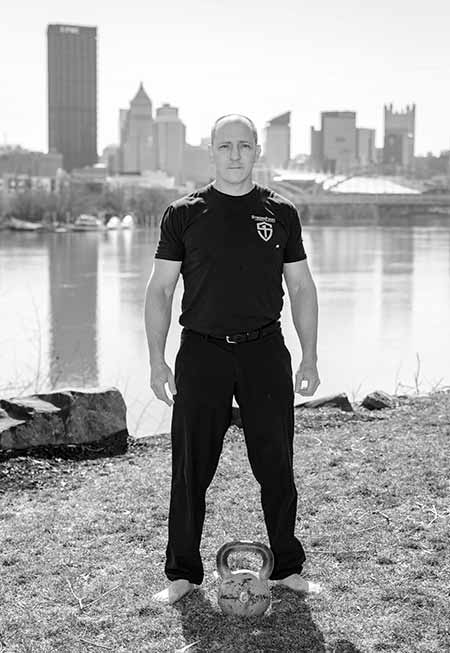
Final Observation—Strength = Persistence
I have joked for years that if I had a superpower it would be stubbornness. Stubbornness, in its most elevated form, is persistence and persistence is the key to many things.
I will let you look up the Calvin Coolidge quote on this. It deserves a place on your wall and in your mind.
Strength means many things and takes many forms. My grandmother, who passed away last year, was one of the strongest people I have ever known (right up there with my parents). She never lifted a weight or competed. She persisted.
And in the end that is the secret—to endure and persist with purpose. Change direction when needed and adjust the course. If pandemic times have shown us anything, it is that being adaptable is key and persistence succeeds.
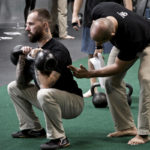
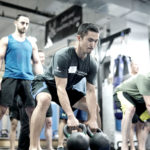
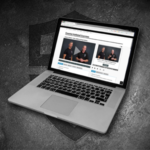
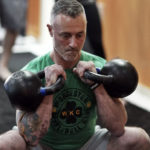
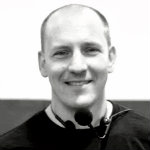



The Force will be with you. Always.
(To use a Brett Jones technique.)
Indeed. ;-]
Hi Brett, thank you for the article. Way back in late September 2009 you were my group leader at the first HKC certification in St. Paul. I learned a lot from you and Pavel then, and that experience was very important for me in laying a solid groundwork for strength and practice. I have never forgotten it.
I have been off and on with KBs over the years since, but I have the intention to really dive into S&S after a few earlier fits and starts. I feel it’s important, and more so now that I am in my 40s.
Thanks again for your past instruction, and for your continued work in the strength and KB community.
Thank you Jay!
Look forward to hearing about your S&S journey.
What a wonderful article. Especially love the mention of leaving legacy. I am saving this to re-read as needed.
Than you, Brett Jones
Sincerely,
Student of Strength
Rita Petko
Thank you Rita
A great list to ponder upon.
Thanks for the long list of books to read! I’ve been off work for the past 3 weeks and have read most of them.
I read The Team Sky Way years ago and reread it recently too. I have tried for many years to improve my training (and life in general) by 1% just like Dave Brailsford describes. I can imagine applying this to all 20 of Brett’s observations….
For a quick fix try Mastermind by Brailsford. 90 minute Audio book.
Thank you Graham
Mr. Jones …
You overlooked a biggie (but it is baked into the pie)*
COMMUNITY!
StrongFirst is a Community of like minded people with shared values & goals.
Training in a StongFirst studio … attending a StrongFirst cert or seminar … sharing a meal or beer with a fellow SF student … you experience the power of the SF community to shape lives.
And you, along with those other 22 pioneers and Pavel, laid a strong foundation for the StrongFirst community to be built.
Quiet professionals, teachers & coaches.
Students of Strength, Wellness & Wisdom.
Strength of a higher purpose.
Thanks for being an important cog in the bigger wheel.
TG in Texas
* 20 years of being a part of that group
Thank you Tom and absolutely agree and hope you are doing well.
Well said Brett. You are always an inspiration.
Thank you John
When il maestro puts pen to paper he never disappoints. What an amazing well written article… Keep up the great work Brett.
Thank you Daniel
Thank you for sharing your insights. Especially the point of always being a student. This April I’m attending an SFG 1 cert. At north of 70, south of 150# and a relative new guy in the weight room, I have my concerns about passing (especially the timed snatch). But pass or fail, I see the weekend as a chance to cram as much info into my brain as possible. And that’s a “pass” that I can achieve, regardless of the snatch test. That said, I would not argue dropping the test bell to 18kg. For little old guys 😉.
Thank you Bill.
Wishing you a successful SFG I experience!
Please keep me posted
Great article! So often, we dive headfirst into “what” and “how”, and we forget to have a solid “why”.
After decades of just getting by and managing the decline that comes with aging, I decided to reconstruct myself. I fell into lots of false starts, lots of chasing unrealistic goals and promises from fitness magazine, lots of downtime from injuries and discouragements.
Those learnings have led me to deeply appreciate the much simpler paths that others have blazed before me.
Brett, I consider you and those who promote StrongFirst to be among the trailblazers I can relate to the most. It’s taken 10+ years but I’m now 64 and in the best shape of my life. SF has become more lifestyle than just a health/fitness regimen.
Thank you for your insights and philosophy lessons.
I’m definitely a SF student for life.
Bruce—thank you so much and congratulations on your training success!
Outstanding observations & insights in this one Brett! Thank you for all that you do for the StrongFirst community!
Thank you Christine!
Brett – As your student and client for 19 of those 20 years, it has been a real honor to work with you. Consistency trumps intensity every time. There is no question about this. Truly blessed to have trained in your dojo. Your teaching informs mine. Your professionalism informs mine as well. Most importantly – you can’t shoot a cannon from a canoe without disastrous results. Here’s to 20 more my friend. A certifiable soft living comrade…
Mark Kleinginna
Mark—thank you my friend. I am honored to be part of the journey.
Great article Brett. I’ve always believed in the principle of 3Ps – Practice, Patience, and Perseverance. And I’ve applied this to many things in my life and continue to do so. And once I also believe that it is one of the main reasons I am attracted to strength training.
Thank you—I like the principle of the 3Ps.
Great article Brett
Thank you
Yet another wonderful and insightful article. You and I started our journey with Pavel in almost the same way, with PttP. I got my book two months before you, if I remember correctly from a previous article, and of course I haven’t made a career out of anything, remaining a student. I’ve been learning from you for these past twenty years. I greatly appreciate all you’ve done for me. Didn’t know you had gone through the cancer experience though so I’m glad that is better for you. Looking forward to reading another twenty years from you!
Thank you Ric—you are correct…I did start with PttP.
Here’s to another 20!
Outstanding article Brett.
Thank you for all the help and kindness you’ve given me over the years. You are an inspiration.
Loyalty, honour, respect!
Thank you my friend—I am inspired by you.
Wow! I’ll take your comment into my high school wt room today Brett!
Thank you.
Thanks for sharing those observations and insights, Brett. I can see them being included one day in Brett’s Book of Life Lessons. Here’s to the next 20.
SFSparky—indeed…here’s to the next 20!
Great article – especially the part on health.
Thank you my friend.
Insightful and thoughtful article Brett. Thanks
Thank you Conor
Thank you for the great article, Brett. Lots of wisdom in here. Cheers
Cheers Brock
Great article. This is a one to save, re-read and have in one’s manual.
Thank you Alexander
Mr. Jones, it has been my honor and my pleasure to know you for most of these 20 years – here’s to 20 more for us all.
Thank you my friend—likewise!
Thank you my friend—back at you.
Lots of info in this, Mr. Jones. I’ll be rereading it multiple times to ensure that I extract all of the wisdom.
Good health to you, Sir.
Thank you Albert